AITA for dancing half naked in my living room leading to my bf and his family seeing me?
Nate’s promise of a quiet weekend alone was a rare gift—an escape from the shared life he and his girlfriend had built since she was just 19. For her, the house was more than walls and furniture; it was a sanctuary where she could embrace her quirks freely, baking in lingerie, dancing, and singing with reckless abandon. This small slice of freedom was a precious balm to her soul, a moment to reclaim herself amidst the love and routine of living with someone else.
But beneath her lighthearted rituals lay a tension she couldn’t shake—raised in a conservative family like Nate’s, she feared judgment and misunderstanding. The embarra*sment that tangled with her joy was a silent battle, one that made her question if her innocent pleasures were wrong or selfish. Now, caught between vulnerability and the need for honesty, she grappled with whether she had crossed an invisible line in the name of freedom and happiness.







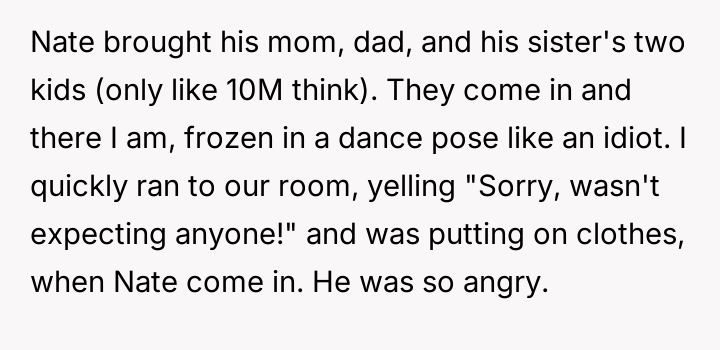

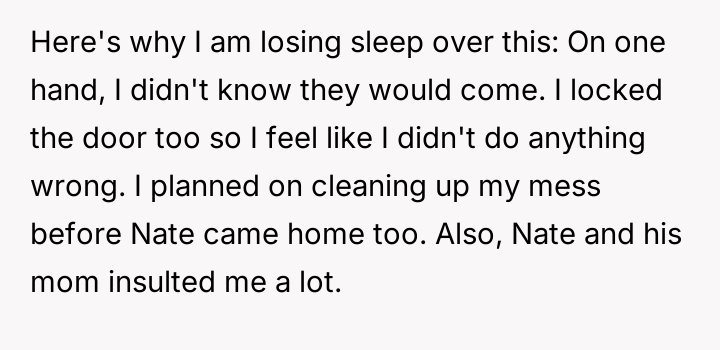

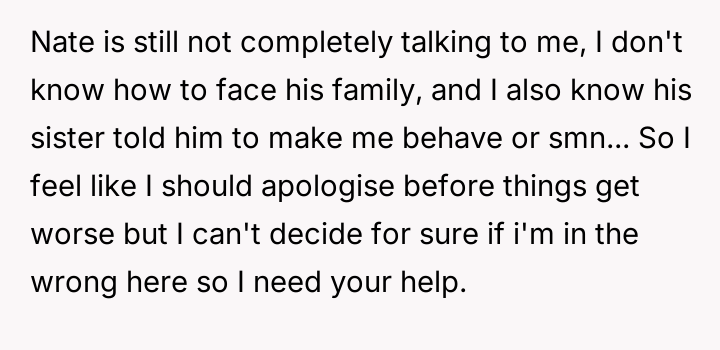

Subscribe to Our Newsletter
As renowned family therapist Dr. Terri Apter explains, ". . . The ability to tolerate ambiguity—to not know everything about someone—is a huge part of being in a good relationship."
This situation involves a sharp collision between established personal habits and external, unexpected social boundaries, compounded by conservative family values that Nate shares. The OP was engaging in a harmless, solitary activity to feel good about herself, operating under the assumption of privacy granted by Nate. Her reaction of freezing and quickly retreating demonstrates shock, not malice or disrespect. Nate, by intending a surprise, inadvertently created a highly embarrassing scenario for his partner, followed by escalating the conflict by allowing his mother to verbally abuse her.
Nate's reaction—anger and withdrawal—suggests a failure to manage his family's conservative expectations while also failing to protect his partner from their judgment, placing the burden of 'embarrassment' onto the OP. Furthermore, the family's reaction suggests a lack of respect for the OP's autonomy within her shared living space. The OP was not demonstrably in the wrong for her private behavior, but the lack of effective boundary setting before the weekend regarding unexpected visitors is a point for future consideration. A constructive path forward involves the OP apologizing for the shock factor of the situation (not the activity itself) while demanding that Nate address his family's inappropriate language and behavior directly.
REDDIT USERS WERE STUNNED – YOU WON’T BELIEVE SOME OF THESE REACTIONS.:
The crowd poured into the comments, bringing a blend of heated opinions, solid advice, and a few reality checks along the way.









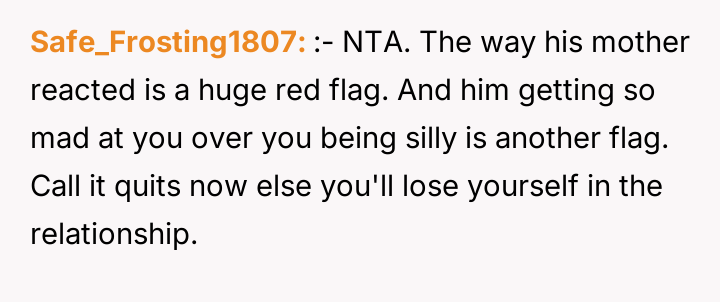





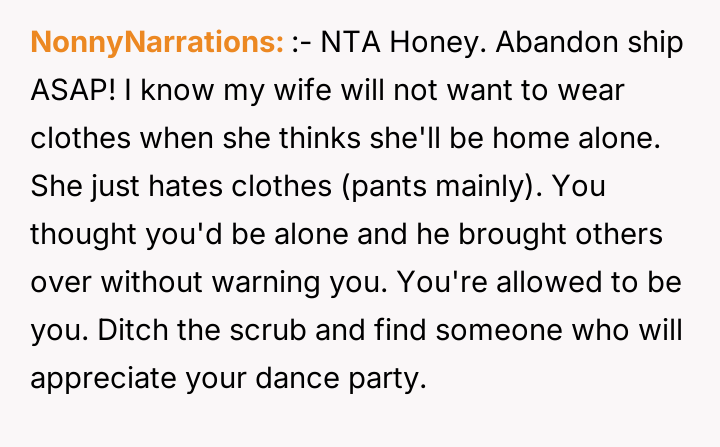
The original poster (OP) is experiencing significant distress because an anticipated private weekend activity was unexpectedly interrupted by her boyfriend, Nate, and his family. The central conflict lies between the OP's right to enjoy personal space and express harmless, private behavior in her own home, and the conservative expectations of Nate's family, which led to public shaming and emotional fallout.
Given the unexpected nature of the visit and the OP's private state, is the severe reaction from Nate and his family justified, or should the OP focus on repairing the relationship by apologizing for the surprise while firmly establishing boundaries regarding private conduct and public criticism?